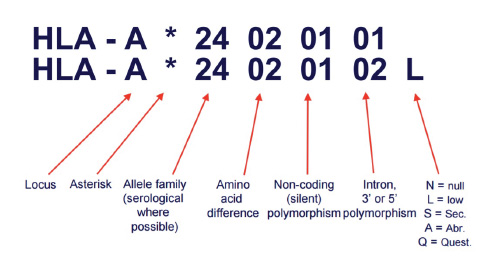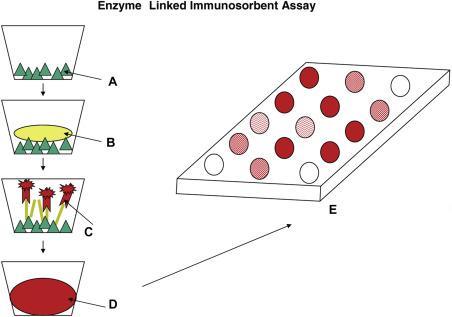How HLA Typing Shapes the Future of Kidney Transplants
When it comes to kidney transplantation, possibly the single most crucial requirement for a successful transplant is donor-recipient compatibility. Human Leukocyte Antigen (HLA) typing plays a central part in this. In this comprehensive guide, we explain what HLA typing is, why it is required, how it is performed, and what it means for kidney transplant donors and recipients.
What is HLA Typing?
HLA typing is a blood test used to detect particular proteins called antigens that appear on the surface of white blood cells, which are essential for determining immune compatibility between donor and recipient.These antigens are markers or labels utilized by the immune system in order to tell the body’s own cells apart from foreign invaders like bacteria, viruses, or transplanted tissue.
The HLA system is made up of genes on chromosome 6. It is highly polymorphic, and there is ample variation from person to person. Although this heterogeneity is beneficial to population immunity, it is a disadvantage for organ transplantation.

The Part of HLA Typing in Kidney Transplant
The body’s immune system is designed to destroy anything that it recognizes as foreign. When there is a kidney transplant in Iran, if the recipient body recognizes the donor kidney as foreign due to incompatibility of the HLA markers, it leads to rejection of the organ.
Matching donor and recipient HLA types greatly reduces the risk of rejection and increases the chance of a successful, long-term transplant. While other considerations like blood type and overall health are important, HLA matching is crucial for optimal success.
The Major HLA Genes in Kidney Transplantation
Among the various HLA genes, the ones that hold the greatest significance for kidney transplantation include:
- HLA-A
- HLA-B
- HLA-DR
Mixing these specific antigens decreases the possibility of graft rejection. Ideally, a perfect match in such genes between donor and recipient provides the best condition for the success rate of kidney transplantation.

How HLA Typing is Performed
HLA typing is carried out by advanced laboratory techniques such as:
- Serological Testing: The traditional method uses antibodies to detect HLA antigens on the cell surface.
- Molecular Typing: Modern methods like PCR (Polymerase Chain Reaction) and DNA sequencing allow for more precise identification of HLA genes.
- Next-Generation Sequencing (NGS): The newest technology provides detailed and comprehensive analysis of HLA types at high resolution.
Crossmatch Testing: A Complementary Step
Alongside HLA typing, healthcare providers usually carry out a crossmatch test. The recipient’s serum is mixed with donor cells to test for the presence of pre-existing antibodies that would target the donor kidney. A negative crossmatch result indicates that the recipient’s immune system is less likely to reject the kidney.
Panel Reactive Antibody (PRA) Testing
PRA testing evaluates how many antibodies in a recipient’s bloodstream react to various HLA antigens, providing insight into their level of sensitization. A high PRA score means the recipient is sensitized and may have a harder time finding a compatible donor.

Why HLA Matching Is Not Always Perfect
Despite the most ideal matching, ideal HLA matching is rare, especially in unrelated donors. With that being said, there are numerous successful transplants that occur with partial matches thanks to advancements in immunosuppressive medications that control the body’s rejection reaction.
Living vs. Deceased Donor HLA Matching
Living donors, who are typically relatives, will more likely be better HLA-matched than cadaveric donors. This is because relatives have more genes in common which you can realize by genetic testing, which increases the likelihood of having matching HLA types.
The Role of HLA Typing in Paired Kidney Exchanges
In patients who have willing but incompatible donors, HLA typing is important in paired kidney exchange programs. These programs match donor-recipient pairs with other pairs in order to find compatible matching, allowing transplants that would otherwise not be possible.
Future Directions in HLA Typing and Transplantation
Emerging genomic technologies and bioinformatics are creating opportunities for enhanced HLA matching. Research into developing tolerance-inducing therapies is also underway, which may eventually reduce or eliminate the necessity of HLA matching by enabling the recipient’s immune system to more readily accept the donor organ.
Final Thoughts
HLA typing is the basis for renal transplantation. It provides vital information that helps medical teams establish compatibility, predict complications, and eventually increase the success rate of kidney transplants. To families and patients, a description of HLA typing can offer valuable insight into the complexity of the transplant process as well as the science involved.
Whether you are a transplant waiting patient, a prospective donor, or simply curious about kidney transplantation, becoming informed about the role of HLA typing can make you an active participant in your own medical care and an educated decision-maker.
